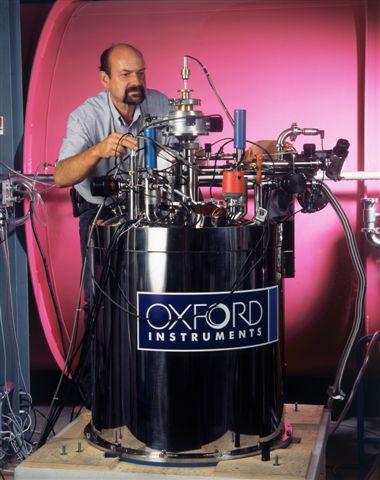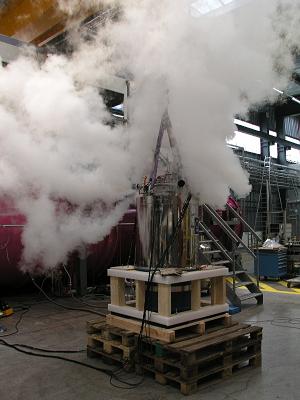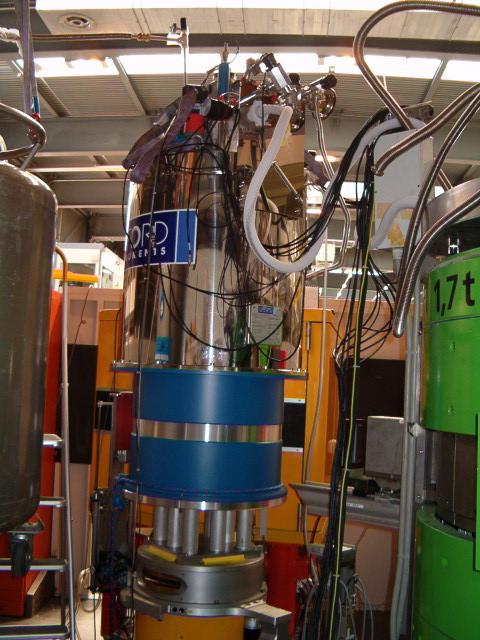
|
MA15 |
|

SINQ LIN LIN
SINQ Wiki
This Page
Referenced by
Wiki Info
JSPWiki v2.0.52
|
|
This is version 22.
It is not the current version, and thus it cannot be edited. The superconducting magnet MA15 was acquired in 2004. It was paid partly by
14.9 Tesla is the maximum field achievable with nowadays technology for a split pair coil (which is needed for wide angle access). This limit could in principle be increased to 17.5 by means of a dysprosium insert for small samples. This option is not (yet) available at SINQ. A rotatable sample stick has been made at PSI using a similar design at the ILL. This allows to leave the magnet in a fixed omega position and to turn the sample orientation within the magnet. At present, MA15 can only be used on RITA2. However, some Restrictions have to be obeyed. Cooldown Procedure?
Pending Issues
Attachments: ma15c.jpg ma15b.jpg ma15d.jpg ma15a.jpg This particular version was published on 23-Feb-2009 09:54:49 UTC by StephanFischer. |


